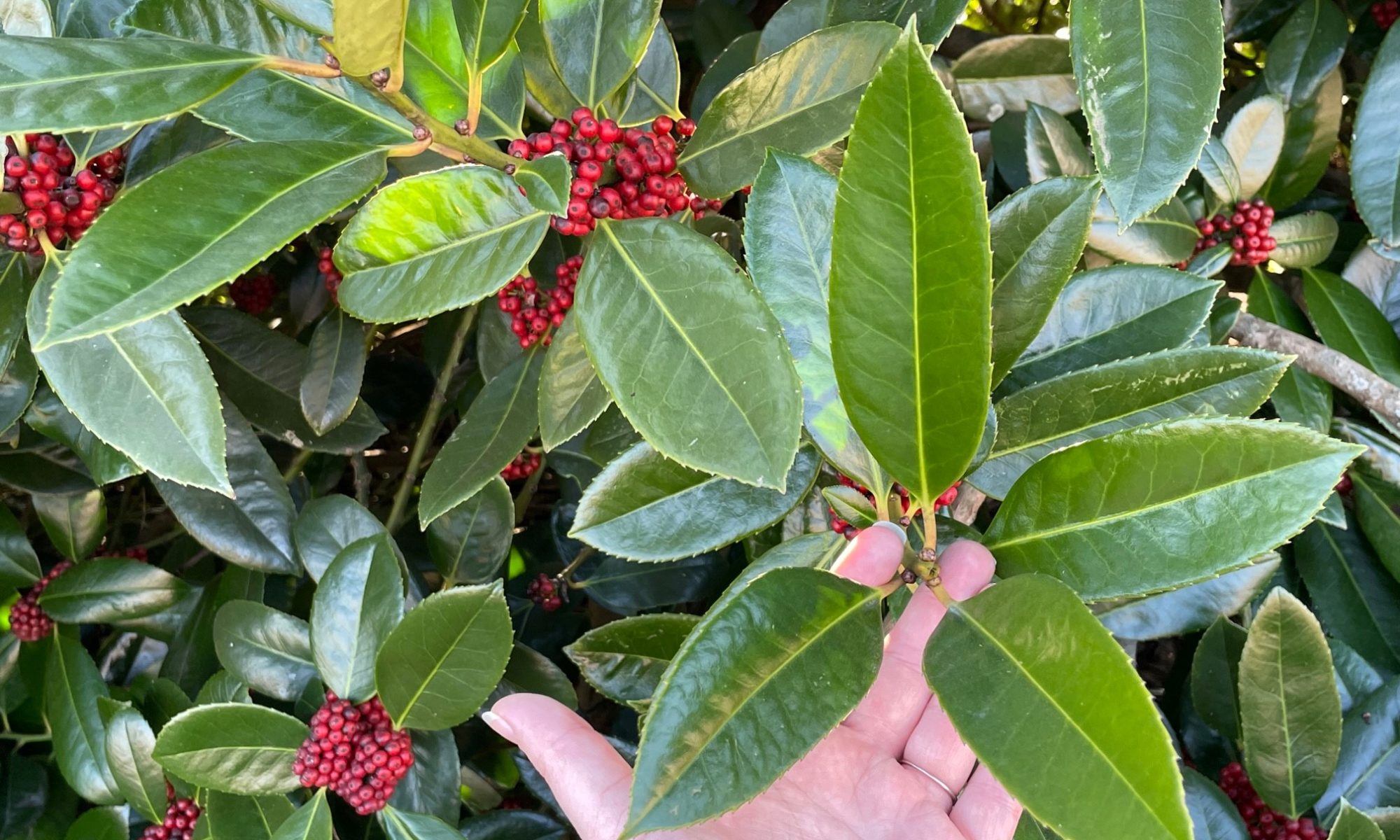
UT Gardens’ December 2022 Plant of the Month
Submitted by Celeste Luckey Scott, Extension Agent, UT-TSU Extension Madison County
Hollies are versatile plants with a wide range of uses in the landscape. Perhaps my favorite species of this genus is Ilex latifolia, commonly called the lusterleaf holly.
From a distance, the leaves of Ilex latifolia are often mistaken for those of the Southern magnolia, Magnolia grandiflora. I recall the first time I saw a specimen of this plant. It was being used in a living screen, and I was about 30 yards away when I myself made this incorrect assumption! I was initially drawn to the large, flat leaves. They were wide at the base and tapered towards the tip, leathery in texture, and some were even larger than the size of my hand. Upon closer inspection, I noticed the plant’s heavy berry load. The berries, which were immature and green at that time, were forming in huge clusters nestled at the leaf axils (where the leaf attaches to the branch) and encircling the stem. As the season progressed into winter, the berries turned a deep, dull red and were visible from a great distance, which only added to this plant’s beauty.
Ilex latifolia has a narrow, dense pyramidal shape, reaches average heights of 20 to 25 feet, and growth is considered slow. The large, broad leaves can reach 6- to 8-inches long and 3- to 4-inches wide. They are dark green and their upper surface is shiny and lustrous, which lends itself to the plant’s common name of lusterleaf holly. The leaf margins are edged evenly with small, coarse teeth, not spiny. Ilex latifolia prefers the heat of summers in the South and is hardy from USDA hardiness zones 7 through 9. There are several cultivars, but the straight species is the most commonly found at garden centers and is a grand addition to any landscape.
In my opinion, this species has the most beautiful foliage of all the hollies. It is resistant to heat, insects and diseases and could serve equally well as a specimen, in a grouping or as a component of a living screen. While this holly is not currently used widely in landscapes, it is worth consideration, and in the authoritative “Manual of Woody Landscape Plants,” Michael Dirr writes that Ilex latifolia “certainly ranks among the best of the broadleaf evergreens.”
Specimens of Ilex latifolia can be seen growing on the UT Gardens, Jackson, grounds in a screen planting located on the northern side of the east end of the conifer bed, as well as in a tapestry screen planting beyond the annual trial berms on the west side of the garden.
The UT Gardens includes plant collections located in Knoxville, Crossville and Jackson, Tennessee. Designated as the official botanical garden for the State of Tennessee, the UT Gardens are part of the UT Institute of Agriculture. The Gardens’ mission is to foster appreciation, education and stewardship of plants through garden displays, educational programs and research trials. The Gardens are open during all seasons and free to the public.
For questions or comments please contact: utgardens@utk.edu